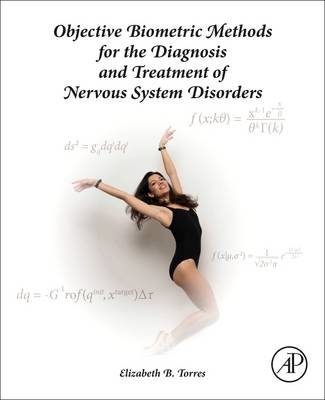
Objective Biometric Methods for the Diagnosis and Treatment of Nervous System Disorders
Academic Press Inc (Verlag)
978-0-12-804082-9 (ISBN)
Dr. Torres is a Computational Neuroscientist who has been working on theoretical and empirical aspects of sensory motor integration and human cognition since the late 90’s. She graduated from Mathematics and Computer Science and spent a year at the NIH as a Pre-IRTA fellow, applying her skill set to the medical field. This work led to Pre-doctoral-fellowship funding (5 years) of graduate school. During her PhD at UCSD, she developed a new theoretical framework for the study of sensory motor integration, employing elements of Differential (Riemannian) geometry and tensor calculus adapted from Contemporary Mechanics and Dynamics to the realm of Cognitive Neuroscience. Upon PhD completion, she moved to CALTECH to receive postdoctoral training in electrophysiology and Computational Neural Systems as a Sloan-Swartz Fellow, a Della Martin Fellow and a Neuroscience Scholar. In parallel, she translated her models to work with humans suffering from pathologies of the nervous systems and built a new platform for personalized analyses of human naturalistic behaviors. She joined Rutgers University in 2008 and deployed her new platform to work on neurodevelopmental disorders with a focus on issues with social interactions. Under an NSF Cyber Enabled Discovery Award, she then launched a transformative research program in autism seeking to build synergies with industry, funded by the NSF Innovation Corps initiative. She filed four patent technologies and with the generous funding of the Nancy Lurie Marks Family Foundation and the New Jersey Governor’s Council for the treatment and research of autism, she extended the new platform to study natural dyadic and social behaviors in general. Her lab’s vision has paved the way to seek new frontiers in personalized mobile-Health, dynamic diagnostics systems and new objectively-driven drug development for clinical trials. The overarching goal of her group is to create the means to quantify and track improvements in the person’s quality of life. Photo credit - Roy Groething. Video https://www.youtube.com/watch?v=e27da3rxnMg
1. The closed feedback loops between the peripheral and the central nervous systems, the principle of reafference and its contribution to the definition of the self 2. Critical ingredients for proper social interactions: Rethinking the mirror neuron system theory3. The case of autism spectrum disorders: When one cannot properly feel the body and its motions from the start of life 4. The case of schizophrenia: Is that my arm moving on purpose or spontaneously passing by? 5. Learning to be an expert in sports and the performing arts: Teaching sensory-motor physiology to psychology students from the start of their clinical careers6. Rethinking diagnoses and treatments of disorders: The third (objective) neutral observer assessing the interactions between the examiner and the examinee or the therapist and the client 7. Cutting risk, cost and time in clinical trials with the help of big pharma 8. Adding dynamics to the principle of reafference: Recursive stochastic feedback closed control loops to evoke autonomy
| Erscheinungsdatum | 05.09.2018 |
|---|---|
| Verlagsort | San Diego |
| Sprache | englisch |
| Maße | 191 x 235 mm |
| Gewicht | 1500 g |
| Themenwelt | Medizin / Pharmazie ► Medizinische Fachgebiete ► Neurologie |
| Studium ► 2. Studienabschnitt (Klinik) ► Anamnese / Körperliche Untersuchung | |
| Naturwissenschaften ► Biologie ► Zoologie | |
| ISBN-10 | 0-12-804082-3 / 0128040823 |
| ISBN-13 | 978-0-12-804082-9 / 9780128040829 |
| Zustand | Neuware |
| Informationen gemäß Produktsicherheitsverordnung (GPSR) | |
| Haben Sie eine Frage zum Produkt? |
aus dem Bereich


